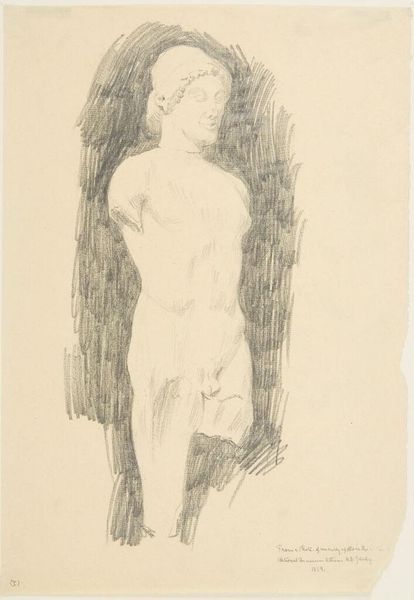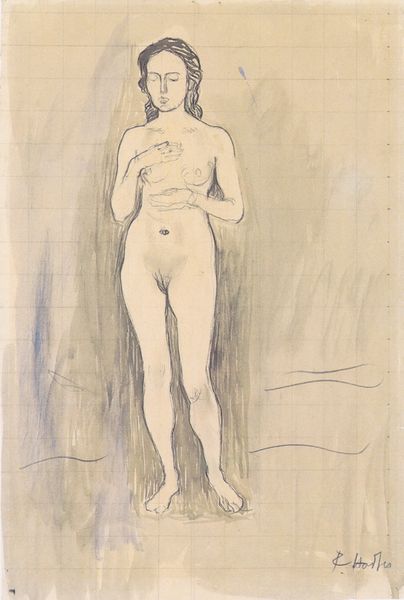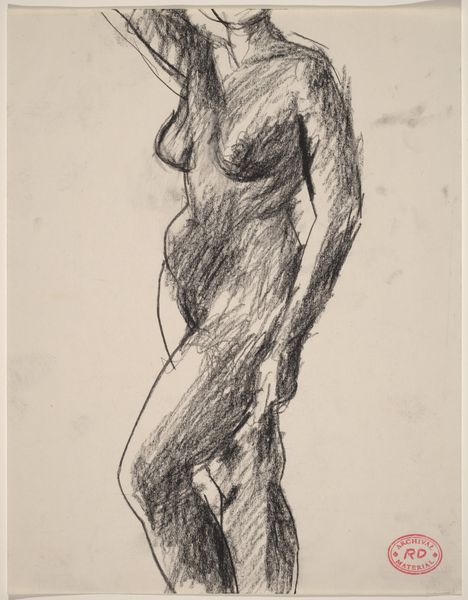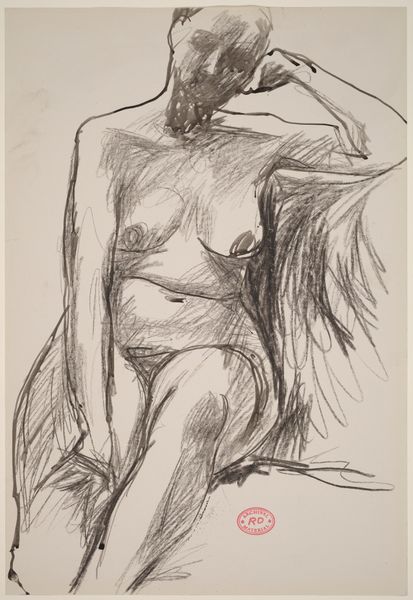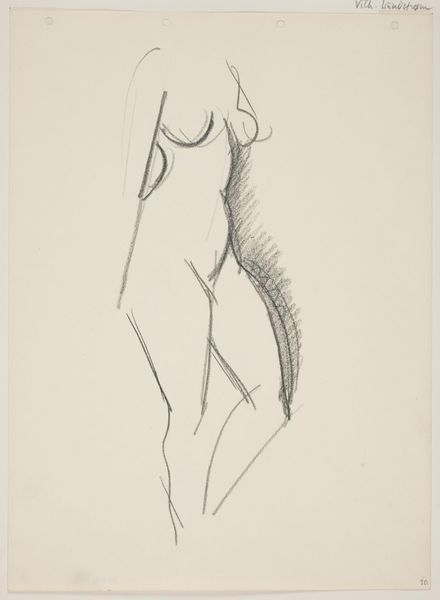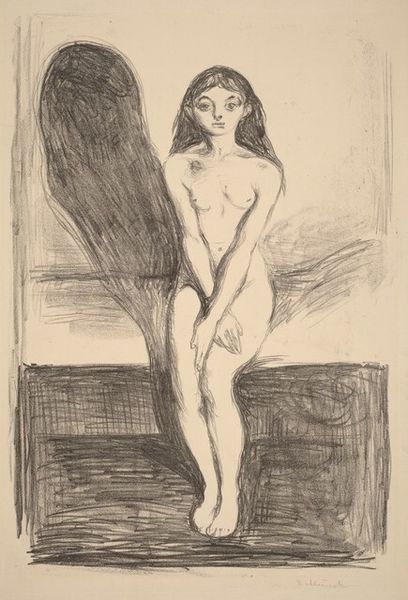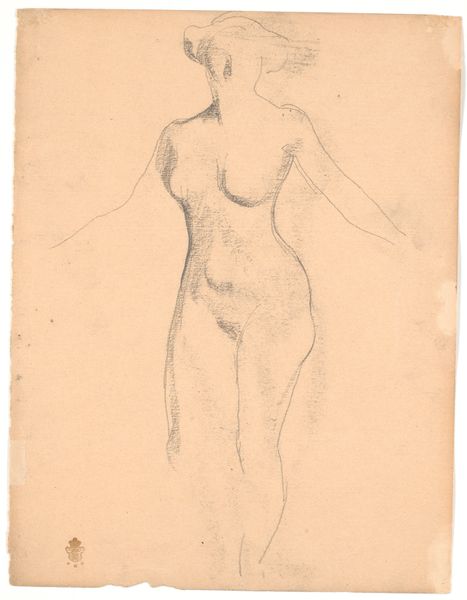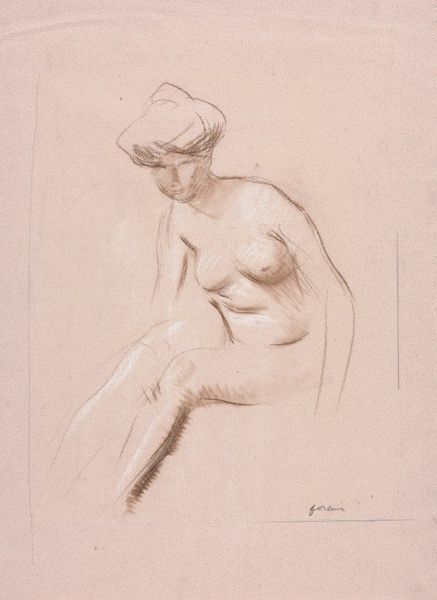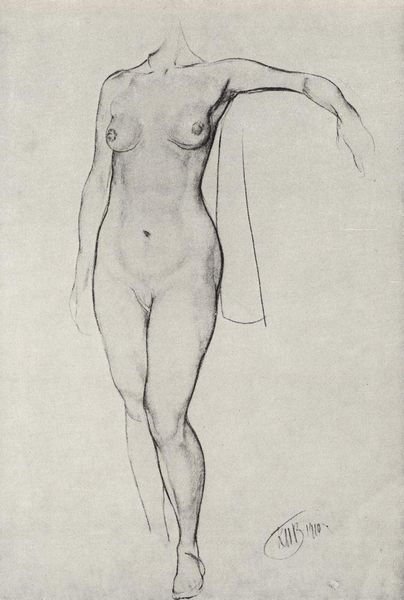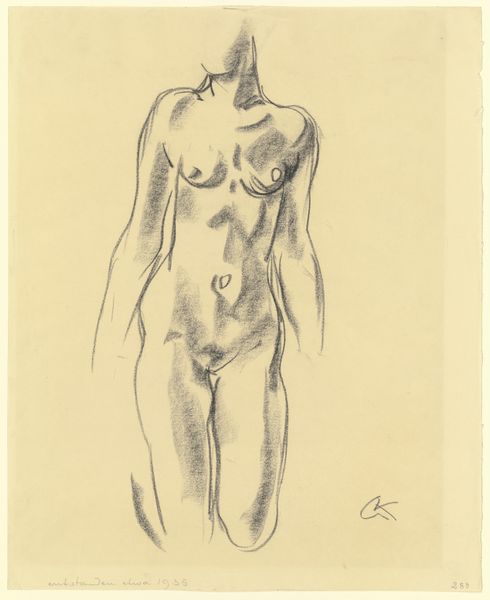
drawing, lithograph, print
#
portrait
#
drawing
#
ink drawing
#
lithograph
# print
#
figuration
#
expressionism
#
line
#
nude
Copyright: National Gallery of Art: CC0 1.0
Curator: Edvard Munch’s lithograph, "Death of Marat," created between 1906 and 1907, offers a rather stark interpretation of a well-known historical event. What strikes you upon first viewing it? Editor: The rawness is palpable. The stark lines and minimal color—that harsh red against the almost sickly green—create a visceral sense of violence and grief. It's unnerving. Curator: It's fascinating how Munch reframes Jacques-Louis David's neoclassical masterpiece of the same subject. David's "Marat" is a stoic martyr, while Munch's rendition emphasizes the brutality and the aftermath of political violence. Editor: Absolutely. David romanticized death with soft edges. Here, Munch opts for stark lines and distorted forms, typical of Expressionism. The lines create tension, particularly in the figure of the woman; a red specter standing nude. Curator: The representation of Charlotte Corday. Consider the implications: nude, powerful...almost defiant. This work clearly places itself within Munch's wider exploration of fraught gender dynamics in turn-of-the-century Europe. There is no remorse in this telling. Editor: I'm drawn to the contrast in texture. The angular, almost frantic lines used for Marat’s body create a sense of lifelessness, while the red lines bring forward the aggressor. It’s like he's decomposing on the paper, and she still embodies vitality. It almost feels accusatory. Curator: An apt description. Moreover, the print medium itself plays a role in democratizing the image, making it more accessible and amplifying the political undercurrents that Munch seems to be tapping into. It's a work of art, but also an act of social commentary. Editor: I see the formal aspects enhancing this social and historical angle, it really pulls the viewer in on the artist's views of the subject. It leaves me with this disquieting, very uneasy mood; not only on a technical level, but conceptually, too. Curator: Indeed, "Death of Marat" continues to ignite discussions on art's role in mirroring, but also actively shaping our perceptions of critical socio-political turning points in history. Editor: It reminds us how crucial it is to interpret both art’s structure, and the stories it unveils for us in such unforgettable, emotional forms.
Comments
No comments
Be the first to comment and join the conversation on the ultimate creative platform.

